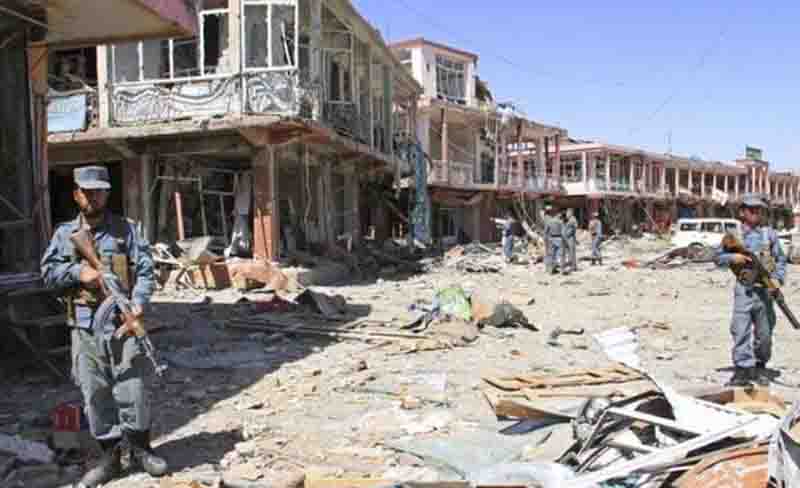Kabul: The number of Afghan civilians killed or wounded by aerial attacks rose to 39 per cent during the first nine months of this year, as the overall civilian casualties remained at “extreme levels”, the United Nations said in a report on Wednesday.
Covering the period from January 1 to September 30, 2018, the new report by the UN Assistance Mission in Afghanistan (UNAMA) documented 8,050 civilian casualties (2,798 dead and 5,252 injured), reflecting the same extreme levels of harm to civilians in comparison to the same period in 2017.
The report indicated that the leading cause of civilians killed and injured from the armed conflict remained the combined use of suicide and non-suicide improvised explosive devices (IEDs) by anti-government elements. It added how the use of suicide IEDs increased in frequency and in lethality, causing record high civilian casualty levels in the first three quarters of 2018.
The UNAMA found that ground engagements were the second leading cause of civilian casualties, followed by targeted and deliberate killings, aerial operations and explosive remnants of war. Of grave concern, the report noted that anti-government elements increasingly directed attacks specifically against the civilian population, including ethnic and religious minorities.
The report also highlighted targeted and deliberate killings as the third leading cause of civilian casualties between January 1 and September 30, resulting in 668 civilian casualties (439 deaths and 229 injured), a 32 per cent drop compared to the corresponding period in 2017.
Anti-government elements caused 89 per cent of these civilian casualties, mainly from Taliban targeting government officials and civilians accused of spying for or providing information to pro-government forces.
In addition to detailing civilian casualties caused by search operations, election-related violence and fighting in the city of Ghazni, the report indicated that Nangarhar, Kabul, Helmand, Ghazni and Faryab were the provinces most affected by the conflict. For the first time, Nangarhar surpassed Kabul as the province with the most civilian casualties in the first nine months of 2018, more than double the number recorded during the same period in 2017.
“Every civilian death leaves a family devastated, grieving and struggling to come to terms with the loss, and each civilian injured or maimed causes untold suffering. The worrying rise in civilian casualties in Nangarhar reflects an unacceptable trend that is indicative of how Afghan civilians continue to bear the brunt of this ongoing conflict,” said Danielle Bell, UNAMA’s Human Rights chief.
The increase in the number of civilian casualties from suicide and complex attacks by anti-government elements, more than half of which are attributed to the Islamic State-Khorasan Province (ISKP), continued to offset decrease in civilian casualties from other incident types, including an 18 per cent reduction in casualties caused during ground engagements, as well as a 32 per cent decrease from targeted and deliberate killings, the UNAMA stated.
“As there can be no military solution to the fighting in Afghanistan, the United Nations renews its call for an immediate and peaceful settlement to the conflict to end the suffering of the Afghan people. All parties can and should do their utmost to protect civilians from harm, including by making concrete progress toward peace,” said Tadamichi Yamamoto, the Secretary-General’s Special Representative for Afghanistan and head of UNAMA.
The report also underlined the alarming rise in reports of incidents of killing and maiming, sexual abuse and recruitment and use of Afghan girls and boys and highlighted the severe impact of the armed conflict in Afghanistan on children.
Between January 1 and September 30, UNAMA recorded 2,136 child casualties (653 deaths and 1,483 injured) as a result of the armed conflict, an overall decrease of 15 per cent compared to the same period in 2017. The decrease mainly resulted from fewer children killed and injured during ground engagements, though this remained the leading cause of child casualties.
The UN reiterated its call for anti-government elements to immediately cease the deliberate targeting of civilians, particularly with the use of illegal and indiscriminate IEDs, and maintained that all parties to the conflict must uphold their obligations to protect civilians from harm and must strictly adhere to their obligations under the international humanitarian law, at all times.
[source_without_link]ANI[/source_without_link]

